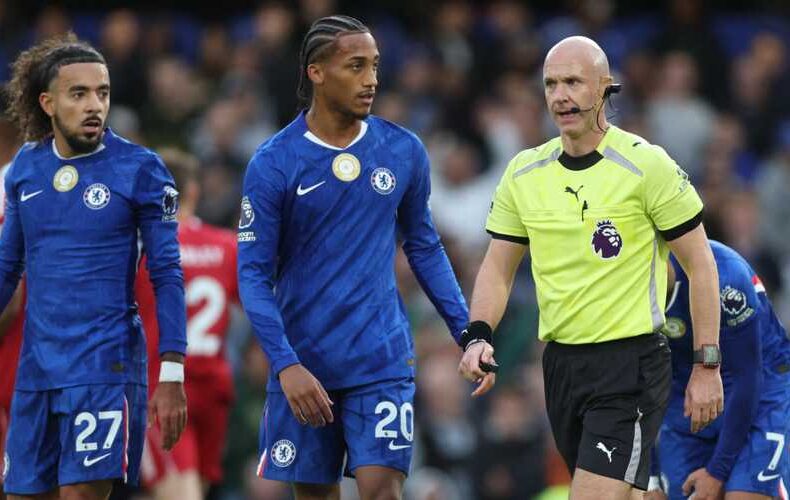
Chelsea’s “future Ballon d’Or winner” can help Pedro reach Palmer levels
1. Setting the Stage
In recent months, conversations in Chelsea circles have turned to one name above most: Cole Palmer. Hailed by many as a “future Ballon d’Or winner,” Palmer’s meteoric rise and consistent performances have placed him at the heart of the club’s attacking ambitions. That label, while aspirational, carries expectations — not just on Palmer himself but on how he can elevate those around him. Enter João Pedro, the Brazilian forward who joined Chelsea and now finds himself partnering with one of the club’s brightest young stars.
2. Pedro’s Arrival and Expectations
Pedro’s move to Chelsea was met with optimism. At Brighton, he showcased glimpses of a modern number-9: mobile, technically adept, able to drift and assist as well as score. But expectations in West London are steeper. The pressure is not just to score plenty, but to perform consistently, to deliver in big games, and to grow into a forward who can be compared to the elite. It is in this crucible that the impact of a teammate like Palmer becomes vital.
3. Chemistry Over Individual Brilliance
A star partner doesn’t guarantee success, but chemistry does. Pedro has already hinted at this mutual belief. On his first day, he conveyed to Palmer: “I’m here to help you,” trusting that Palmer would reciprocate. That public show of faith suggests Pedro doesn’t see himself eclipsed — instead, he sees synergy. If Palmer can attract attention, open spaces, draw defenders, Pedro could reap the benefits.
4. How Palmer’s Style Can Pull Pedro Up
Palmer’s style is fluid, unpredictable, and creative. He drifts, he links, he penetrates. With defenders preoccupied by him, Pedro may find more isolation, more room to run, to exploit mismatches. In effect, Palmer can become a “space maker,” not just a goal-getter. That could lift Pedro from being just a finisher to a more complete forward — someone who contributes in buildup and transition.
5. Shared Responsibility, Shared Growth
The benefit is mutual. While Palmer helps Pedro, Pedro helps Palmer too. Pedro’s presence gives Chelsea another axis of attack, preventing teams from over-focusing on Palmer. Together, they can share pressing duties, rotate, overload flanks. Over time, Pedro’s growth could mirror the levels Palmer is reaching — not necessarily in flair alone, but in consistency, decision-making, and clutch contributions.
6. The Ladder Toward “Palmer Levels”
But what does “Palmer levels” mean? It means combining creativity with goal threat, doing so under pressure, and being indispensable. To reach that plateau, Pedro must adapt: improve his link-up play, refine his movement off the ball, sharpen composure in key moments, work harder defensively. Having Palmer beside him accelerates that growth by raising training standards and match-day benchmarks.
7. Psychological Boost and Confidence
There’s also a psychological dimension. Knowing you share a frontline with someone praised as a future Ballon d’Or aspirant can galvanize a player. Pedro, seeing Palmer’s accolades and media attention, might push himself further. In team talks, in training, that sense of ambition becomes contagious. Pedro’s own confidence could swell, knowing he belongs in Chelsea’s highest tier of talent.
8. The Danger of Overshadowing
Of course, there’s a risk. In any duo, one can overshadow the other. Palmer’s media shine might cast Pedro into a secondary light. If Pedro struggles for goals or form, comparisons will be harsh. The delicate balance is this: Pedro must be able to stand out even when Palmer’s brilliance is on display. He cannot be passive; he must assert presence.
9. Tactical Adjustments and Coaching Influence
Chelsea’s coaching staff will play a key role. They must design systems that allow both players to thrive — avoid stifling Pedro by structuring too rigidly around Palmer. Alternating starting patterns, tweaking formations, ensuring Pedro gets service, and rotating the fullbacks or midfielders to complement both will be critical. The coach’s belief in Pedro, backed by rotation and minutes, will matter as much as Palmer’s contributions.
10. Performance Under Big Game Pressure
Elevating to “Palmer levels” means performing when it counts — in Champions League nights, in derbies, in finals. Palmer has already shown in high-stakes fixtures he can produce. The question is: can Pedro match that intensity? If Pedro steps up in those moments — scoring, assisting, influencing games — his reputation will begin to converge with Palmer’s lofty trajectory.
11. Milestones and Measuring Progress
To judge progress, we’ll watch metrics: goal involvement per 90, expected goals plus assists, shots in dangerous zones, pressing contributions, influence in buildup — not just raw goals. If Pedro can show upward trends here, the narrative of “reaching Palmer levels” transforms from hyperbole into reality. And, over time, if he earns his own Ballon d’Or whispers, the tandem will be complete.
12. A Shared Future?
In the end, Chelsea’s “future Ballon d’Or winner” — Palmer — holds the potential not only to shine himself but to illuminate Pedro’s path. If both hold their ambition, harness their partnership, and thrive together, Pedro may grow from “alongside Palmer” into his own star. The dream: two frontmen, both world-class, driving Chelsea back to the top. Whether Pedro can ascend to those Palmer levels depends on mindset, adaptation, and seizing chances — with Palmer’s presence as both catalyst and companion.
Leave a Reply